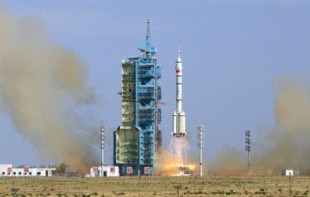Stephen J Pyne reviews Working on Mars: Voyages of Scientific Discovery with the Mars Exploration Rovers by William J Clancey

Ethnography was one of the beneficiaries of the great era of European exploration and empire. Polymath naturalists such as Alfred Wallace and Alexander von Humboldt recorded new peoples as they did plants and mountains. Founding figures of anthropology such as Bronisław Malinowski and Franz Boas trekked to exotic locales in search of new cultures. But still-lost tribes became scarce. Anthropologists took up the study of mixed-cocktail cultures or worked for corporations. William J Clancey, however, found a way out of the puzzle by studying a tribe no-one had thought of: Martians.
Or, more accurately, MERtians. This is the tribe composed of scientists and engineers who have overseen NASA’s Mars Exploration Rovers (MER) programme that sent two instrument-laden vehicles to Mars. They arrived in January 2004, with one of the rovers, Opportunity, landing at Meridiani Planum, a landscape suggestive of sediments. The other “robotic geologist”, Spirit, worked on the other side of the planet, at an impact site called Gusev Crater. For the 90 sols (Martian days) of the rovers’ scheduled mission, the MERtians lived on Mars time and, with elaborate protocols, directed the rovers on traverses and walkabouts. Then, with the warranty on the rovers expired, they reverted to Earth time and continued. After getting mired in a sand pit, Spirit expired on 22 March 2010. Opportunity is still on reconnaissance. Together, as the MERtian Steve Squyres puts it, they have been conducting “the first overland expedition across the surface of another planet, ever, in human history”.
Like many other tribes, the MERtians included a participant-observer – or rather, in keeping with its collective character, a team of them – in the form of “cognitive scientists” under the direction of Clancey, chief scientist of human-centred computing in the Intelligent Systems Division at NASA Ames Research Center. An informing concept in the team’s conclusions is the conceit of “inhabiting the rover”, or the sense in which MERtians mentally project themselves into the robots such that they can imagine themselves as genuine explorers. In like manner, with his book Working on Mars Clancey inhabits the sphere of the MERtians to argue that their treks are true “voyages of scientific discovery”.
The book is a detailed ethnographic inventory of how the MERtians see and behave in their world – and on Mars. Readers learn how they perceive their settings, parse their kinship ties, invent a metonymic language and knap their digital technologies. We read about how they organize their quotidian chores, mingle elders and novitiates, conduct their rites of passage, cultivate an aesthetic and explain the moral world they inhabit and its associated ethics. Perhaps above all, we hear them recite their stories – both the mission mythologies they have inherited and those they try out for the first time.
Clancey is leery of loose anthropomorphizing and vague romanticizing, and in his book he proceeds as methodically and ploddingly as the rovers. By organizing it around topics such as “communal scientist” and “scientist engineer”, he avoids the slippery epistemologies and conventional tropes through which such experiences are typically recorded. Sometimes this obsessiveness helps. Often it seems indifferent, such as his “categorization of scientific practices by sociotechnical organization”. And sometimes it becomes tedious, recalling the American historian Arthur Schlesinger Jr’s famous observation about “the painful enumeration of the obvious”. Thus, we’re told “We can characterize the references to what is happening on Mars grammatically as ‘first person’ (I/we did something), ‘second person’ (you, the rover, did something), and ‘third person’ (it – Spirit or Opportunity – did something). These ways of talking reveal how people are conceiving (mentally co-ordinating) their relation to the rover and its actions.” Who knew?
Exploration systems have replaced the individual explorer
The text may also set new standards for repetition. Themes are stated, and restated, and then stated again. Even the photographs are repeated, once in a colour insert, and again as black and white images sprinkled throughout the text. The best passages are block quotes from MERtians describing what they do, not the participant-observer’s description of their descriptions. If you want to know how to invent a tribe, Working on Mars can serve as a manual. But if you want to know how the rovers were created, what they did, when they did it and what they found, then you should look elsewhere; several MERtians, notably Squyres and Jim Bell, have written lively personal accounts.
MER is exploration of a new kind, in which exploration systems have replaced the individual explorer, just as the conceit of “inhabiting” robots has replaced the need for bodily presence. Hence, in addition to its participant-observer component, the book expends some effort characterizing exploration as a concept and practice. This is something I have written about myself, and in the interests of full disclosure, Clancey seems to have wildly misread some of my writing on the subject (or perhaps I’m misreading his misreading). My own view is that exploration is an odd amalgam. Its intellectual purpose differentiates it from pure adventuring; its need for a journey distinguishes it from pure science. This distinction is what makes the Huygens probe to Titan exploration, and the Hubble telescope science. By incorporating modernism and robots, exploring is undergoing a phase change, as it did in Humboldt’s time when it bonded with Enlightenment science. MER is as different from (and similar to) Humboldt, as Humboldt from Columbus.
Yet the instinctive medium of expression for exploration remains the story, for that is how we convey the experience of going on a journey. Working on Mars, however, labours strenuously to avoid any chronological order, much less the literary possibilities available in narrative. It tries to justify the expeditions as exploration by denying the mode of expression most natural to them. It’s as though we knew Humboldt’s years in South America only through his 54-volume Equinoctial Regions of the New World, not his Personal Narrative of Travels to the same.
The disturbance in the force is Mars. It’s okay, it seems, to explore the other planets with robots alone. It is not okay for Mars. Mars is different; the most Earth-like of planets, the one that people might someday land on and, in astrofuturist visions, might colonize. It has a literature. So it matters hugely to Clancey that people somehow be on Mars, even if they do it through “inhabiting a rover”. That imperative distorts everything around it. Yet it isn’t necessary. Thanks to the Internet, Earthlings everywhere had the Opportunity to be on Mars. We were all there in Spirit.
- 2012 The MIT Press £20.95hb 328pp



